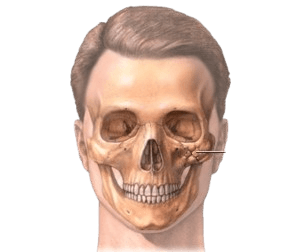

Craniofacial Reconstruction Surgery
Craniofacial surgery is used to treat issues with the head, skull, face, and neck. Specifically, the treatment involves surgical procedures and the supervision of skilled surgeons. Craniofacial reconstruction surgery reconstructs the damaged bone and tissue; as a result, this helps in improving the appearance of disfigured or abnormal shapes of the face and head. For instance, children with abnormal facial structures benefit from early surgery, which is advantageous in minimizing the impact of these conditions on growth, development, and function.
There are generally two groups of people who may need craniofacial surgery. First, the first group of people are those who are born with abnormalities of the bones, muscles, and other tissues of the skull and face. This condition is known as congenital abnormalities.
On the other hand, the second group includes people who develop irregularities in the skull and face later in life. This can occur due to diseases and trauma. This condition is known as acquired abnormalities.
Conditions that need craniofacial surgery
The common conditions that need craniofacial surgery are cleft lip and cleft palate.
Other conditions of congenital or acquired types are treated with craniofacial surgery include:
- Craniosynostosis
- Pierre Robin syndrome
- Treacher collins syndrome
- Crouzon's syndrome
- Aperts syndrome
- Craniofacial trauma
- Jaw deformities
- Facial jaw deformities
Understanding the surgical procedure of craniofacial reconstruction surgery
- Before starting the incision procedure, the patient is given general anesthesia to make the patient in a deep sleep state and feel no pain during the whole procedure.
- This is a type of major surgery which takes around 4-14 hours to complete the surgery.
- Some of the facial bones are moved and placed into a normal facial structure.
- The portion of bone or bone graft is carried out from the pelvis, ribs, or skull to fill in the spaces where bones of the face and head have been moved.
- Sometimes, metal plates and screws are used to intact and hold the bones in place and the jaw is tightened with wired together to be stuck into the new bone in place.
- In case the surgery is causing swelling on the face, mouth, or neck, the patient's endotracheal tube may be affected due to some reason and it may become a serious issue of concern.
- Endotracheal tube is surgical equipment used for long surgical procedures under general anaesthesia.
Risk factors of craniofacial reconstruction surgery
Generally, craniofacial surgeries are safe, but surgery in itself is a risky term that comes with risks. Some of the most common risk of craniofacial surgery include:
- Bleeding
- Infection
- Anesthesia side effect
- Breathing issue
- Cerebrospinal fluid leakage ( craniosynostosis surgery)
- Need of additional surgery
Who is eligible for craniofacial reconstruction surgery?
A child with a cleft lip, palate or other congenital facial abnormalities may be a candidate for craniofacial reconstruction surgery. The most suitable age for this surgery is from 3 months to 18 months.
Sometimes, certain factors don't allow the surgery to be a suitable option for the child such as infection at the time of surgery, any syndrome or underlying health conditions.
Cost of craniofacial reconstruction surgery in India
India is among the top leading countries that have been providing medical facilities with top notch quality and serving the patients since ages. In fact, medical treatments in India are cost effective and affordable due to its high demand, lower labor cost, government policies, and more factors like that.
Even the cost of craniofacial reconstruction surgery in India is affordable and less expensive compared to other western nations.
The total cost of the treatment may vary depending upon several factors that include types of surgery, stay at the hospital, experience of the surgeon and more.
Summary
Craniofacial surgery is used to treat issues with the head, skull, face, and neck. Craniofacial reconstruction surgery reconstructs the damaged bone and tissue; as a result, this helps in improving the appearance of disfigured or abnormal shapes of the face and head.
The common conditions that need craniofacial surgery are cleft lip and cleft palate.